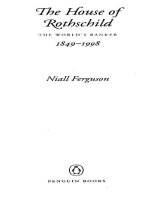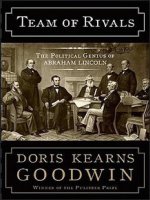Mark pendergrast uncommon grounds the history rld (v5 0)
Bạn đang xem bản rút gọn của tài liệu. Xem và tải ngay bản đầy đủ của tài liệu tại đây (6.58 MB, 397 trang )
Table of Contents
Title Page
Dedication
Epigraph
PROLOGUE
Introduction
INTRODUCTION
PART ONE - SEEDS OF CONQUEST
Chapter 1 - Coffee Colonizes the World
Coffee Goes Arab
Smugglers, New Cultivation, and Arrival in the Western World
Kolschitzky and Camel Fodder
Lovelier Than a Thousand Kisses
The British Coffee Invasion
The Legacy of the Boston Tea Party
Coffee Goes Latin
Coffee and the Industrial Revolution
Of Sugar, Coffee, and Slaves
Napoleon’s System: Paving the Way for Modernity
Chapter 2 - The Coffee Kingdoms
Brazil’s Fazendas
War Against the Land
How to Grow and Harvest Brazilian Coffee
From Slaves to Colonos
The Brazilian Coffee Legacy
Guatemala and Neighbors: Forced Labor, Bloody Coffee
Guatemala—A Penal Colony?
The German Invasion
How to Grow and Harvest Coffee in Guatemala
Women and Children as Laborers
Stealing the Land in Mexico, El Salvador, and Nicaragua
Coffee in Costa Rica: A Democratic Influence?
Indonesians, Coolies, and Other Coffee Laborers
Vastatrix Attacks
The American Thirst
Chapter 3 - The American Drink
Home Roasting, Brewing, and Ruination
The Antebellum Coffee Industry
The Union (and Coffee) Forever
Jabez Burns, Inventor
Arbuckles’ Ariosa: The People’s Coffee
Mr. Chase Meets Mr. Sanborn
Jim Folger and Gold Rush Coffee
Jabez Burns, Editor: Keeping Coffee and Women in Their Place
The Indispensable Beverage
Chapter 4 - The Great Coffee Wars of the Gilded Age
A Coffee Suicide?
Creating the Coffee Exchange: No Panacea
The Most Speculative Business in the World
The Great Coffee-Sugar War
Cutting the Thing Wide Open
The Arbuckle Signatures
Coffee-Sugar Cease-Fire
Chapter 5 - Hermann Sielcken and Brazilian Valorization
The First International Coffee Conference
São Paulo Goes It Alone
Hermann Sielcken to the Rescue
The United States Howls over Coffee Prices
Sielcken Snaps His Fingers
The Lawsuit Against Sielcken
Hermann Sielcken’s Final Years
The Caffeine Kicker
Chapter 6 - The Drug Drink
Mind Cure and Postum
Post’s Fierce Attacks
Tapping the Paranoia
Monk’s Brew and Other Ploys
The Coffee Merchants React
The Collier’s Libel Flap
Dr. Wiley’s Ambivalence
The Birth of Decaf
Post’s Last Act
PART TWO - CANNING THE BUZZ
Chapter 7 - Growing Pains
Brand Proliferation
A & P Grinds Its Own
The Premium Peddlers
The Institutional Niche
Sexy Coffee?
Hills Brothers Fills a Vacuum
MJB: Why?
The Great San Francisco Earthquake
Chase & Sanborn: Tally-Ho
Joel Cheek Creates Maxwell House
Gift, Guest, or Yuban?
The (Slow) Rise of Women
Chapter 8 - Making the World Safe for Coffee
Coffee and the Doughboy
A Cup of George for the Boys
Meanwhile, Back on the Fazenda . . .
Colombia Comes of Age
Robusta or Bust
Between Cancer and Capricorn
Chapter 9 - Selling an Image in the Jazz Age
Prohibition and the Roaring Twenties
The Coffeehouse Resurgence
Eight O’Clock Rocks and Jewel Shines
The West Coast Brands Move East
The Decline of Arbuckles’
The Corporate Monsters Swallow Coffee
The Great Stock Market-Coffee Crash
Chapter 10 - Burning Beans, Starving Campesinos
The Coffee Inferno
Dictators and Massacres in Central America
Brazil Opens the Floodgates
Chapter 11 - Showboating the Depression
Glued to Their Radios
Benton & Bowles Survive the Crash
Rancid Oils and Coffee Nerves
All Aboard for the Maxwell House Show Boat
Arbuckles’ and MacDougall Fade Away
Lobbing Coffee Hand Grenades in Chicago
Getting the Gong and Trouble in Eden
Coffee Brutes and Bruises
For Better, For Worse
Hammering the Chains
The European Coffee Scene
The World of the Future
Chapter 12 - Cuppa Joe
Goose-stepping in Guatemala
Hammering Out a Coffee Agreement
1941: Surviving the First Quota Year
Coffee Goes to War—Again
Coffee at the Front
Denazifying Latin America
The U.S. Industry Survives the War
Good Neighbors No Longer
The Legacy of World War II
PART THREE - BITTER BREWS
Chapter 13 - Coffee Witch Hunts and Instant Nongratification
Guy Gillette’s Coffee Witch Hunt
Instant, Quick, Efficient, Modern—and Awful
Invention of the Coffee Break
The Boob Tube
Price Wars, Coupons, and Fourteen-Ounce Pounds
Neglecting a Generation
The Land That Smelled Like Money
The Great Fourth of July Frost
A CIA Coup in Guatemala
Suicide in Brazil
Chapter 14 - Robusta Triumphant
Out of Africa
Hot Coffee, Cold War
Regular Robusta
The Chock-Full Miracle
The Coffeehouse: A Saving Grace
London Espresso
European Coffee in the Fifties
Japan Discovers Coffee
Googie Coffee
In Denial
Scared into Agreement
Stumbling Toward Ratification
Boomer Bust
Merger Mania
The Maxwell Housewife
The Decline of Hills Brothers
The Creation of Juan Valdez
In a Vortex
PART FOUR - ROMANCING THE BEAN
Chapter 15 - A Scattered Band of Fanatics
Zabar’s Beans
Mentors, Fathers, and Sons
Tourist Coffee and Other Problems
The Think Drink Thunks
The GI Coffeehouses
“Caution: Coffee May Be Hazardous to Health”
Gold Floats, Coffee Sinks
Coffee Inroads in Japan and Europe
The King of the Robustas and the Burundi Massacres
Starbucks: The Romantic Period
God’s Gift to Coffee
A Coffee Love Affair
The Ultimate Aesthete
Specialty Proliferates
Mrs. Olson Slugs It Out with Aunt Cora
Chapter 16 - The Black Frost
Machiavellian Market Manipulations
Riding the Bull Market to Millions
Hot Coffee (Stolen) and High Yield (Awful)
Specialty Reaches the Heartland
One Big Slaughterhouse
Repression and Revolution in Central America
El Gordo and the Bogotá Group
Grinding Out the Decade
Chapter 17 - The Specialty Revolution
Good Till the Last Drop Dead
Learning to Love Uncoffee
The Coffee Nonachievers
The Little Big Guys Struggle
Whole Beans and Gorgeous Women
Quotas and Quagmires
Guerrilla Wars, Coffee Disasters
Fair Trade Coffee
Blood in the Salvadoran Cups?
The Big Boys Try to Get Hip
Coffee and Cigarettes
The Collapse of the ICA
The Coca-Coffee Connection and a Black Harvest
Big Coffee: Ice Cold
Chapter 18 - The Starbucks Experience
Latte Land
Starbucks: The (Very) Public Years
Deflecting the Critics
A Maturing Market
Chapter 19 - Final Grounds
La Minita: A Coffee City-State
The Coffee Crisis
Fair Trade and Starbucks
Howard to the Rescue?
Who’s on Second?
The Third Wave
Cupping at Origin
Rock-Star Baristas
The Rape of the SCAA
The Battle over Coffee’s Soul
Techno-Coffee
The Flattening of the Coffee World
The Threat of Global Warming
Coffee Kids and Other Ways to Help
Mending the Heart with Organic
Coffee Ecotourism
Befriending the Birds
Turf Battles over Politically Correct Coffee
A Troubled World
Coffee—Part of the Matrix
Caffeine, the Drug of Choice
Are You Addicted?
The Coffee Tour in Costa Rica
Winged for Posterity
Acknowledgements
APPENDIX - How to Brew the Perfect Cup
NOTES ON SOURCES
LIST OF INTERVIEWS
ILLUSTRATION CREDITS
INDEX
Copyright Page
This detailed engraving was one of the first accurate portrayals of the exotic coffee plant,
published in 1716 in Voyage de l’Arabie Heureuse
To the memories of Alfred Peet (1920-2007), coffee curmudgeon supreme, and Ernesto Illy (19252008), espresso master
The voodoo priest and all his powders were as nothing compared to espresso, cappuccino, and mocha,
which are stronger than all the religions of the world combined, and perhaps stronger than the human
soul itself.
—Mark Helprin, Memoir from Antproof Case (1995)
The smell of roasting coffee hit me like a waft of spice. . . . It was a smell halfway between mouthwatering and eye-watering, a smell as dark as burning pitch; a bitter, black, beguiling perfume that
caught at the back of the throat, filling the nostrils and the brain. A man could become addicted to that
smell, as quick as any opium.
—Anthony Capella, The Various Flavors of Coffee (2008)
PROLOGUE
The Oriflama Harvest
San Marcos region, Guatemala. Picking coffee berries (known as cherries) for the first time, I
struggle to keep my balance on the precipitous hillside. My basket, or canasta, is tied around my
waist. As Herman, my caporal (supervisor), requested, I try to pick only the rich red cherries, but
sometimes I accidentally knock loose a green one. I’ll have to sort them later.
I pop the skin of a ripe coffee cherry open in my mouth and savor the sweet mucilage. It takes a bit
of tongue work to get down to the tough-skinned parchment protecting each bean. Like peanuts, coffee
beans usually grow in facing pairs. Spitting out the parchment, I finally get the two beans, which are
covered by a diaphanous silver skin. In some cases where the soil lacks sufficient boron, I might have
found only one bean, called a peaberry, considered by some to possess a slightly more concentrated
taste. I spit out the seeds, too hard to chew.
I hear other harvesters—whole families of them—chatting and singing in Spanish. This is a happy
time, when the year’s hard work of pruning, fertilizing, weeding, tending, and repairing roads and
water channels comes down to ripe coffee. I sing a song with a few Spanish phrases: mi amor, mi
corazón.
When I stop, I hear giggles and applause. Unwittingly, I have attracted a group of kids, who now
wander off to resume picking or pestering their parents. Children begin helping with the harvest when
they are seven or eight. Though many campesinos keep their children out of school at other times for
other reasons, it’s no coincidence that school vacation in Guatemala coincides with the coffee
harvest.
I am 4,500 feet above sea level on Oriflama, the coffee finca (plantation) owned by Betty
Hannstein Adams. Betty’s grandfather, Bernhard Hannstein (“Don Bernardo”), arrived in Guatemala
over a hundred years ago, one of many German immigrants who pioneered the country’s coffee
production. Oriflama, which contains over four hundred acres, is half of the original farm, which was
called La Paz.
Most of the coffee trees are caturra and catuai, hybrids that are easier to harvest because they are
shorter and more compact than the older bourbon variety. Still, I have to bend some branches down
to get at them. After half an hour I have picked half a canasta, about twelve pounds of cherries that,
after processing to remove the pulp, mucilage, and parchment, will produce two pounds of green
coffee beans. When roasted, they will lose as much as 20 percent more in weight. Still, I have picked
enough to make several pots of fine coffee. I’m feeling pretty proud until Herman, who stands just
over five feet and weighs a little over one hundred pounds, shows up with a full canasta and gently
chides me for being so slow.
The farm is beautiful, covered with the green, glossy-leafed coffee trees, prehistoric tree ferns and
Spanish daggers along the roadside (to prevent erosion), rolling hills, invisible harvesters calling,
children laughing, birds chirruping, big shade trees dappling hillsides, springs and streams. As in
other high-altitude coffee-growing areas, the temperature never strays far from 75°F.
In the distance I can see the volcano, Santa María, and the smoke from the smaller cone, Santiago,
where in 1902 a side eruption exploded, burying Oriflama under a foot of ash and killing all the
songbirds. “Oh God, what a sight,” wrote Betty’s grandmother, Ida Hannstein, soon after. “As far as
the eye could see everything was blue and gray and dead, like a mammoth cemetery.”
It is difficult to imagine that scene now. The nitrogen-fixing shade trees—inga, poro, and others—
along with the groves of cypresses and oaks and the macadamia trees grown to diversify output,
provide a much-needed habitat for migratory birds. At breakfast I had melon, cream, and honey that
came from the plantation; also black beans, rice, and of course, coffee.
By 4:00 P.M. the harvest day is over, and everyone brings bulging bags of coffee cherries to the
beneficio (processing plant) to be weighed. In other parts of Guatemala, the Mayan Indians are the
primary harvesters, but here they are local ladinos, whose blood combines an Indian and Spanish
heritage. They are all very small, probably owing to their ancestors’ chronic malnutrition. Many wear
secondhand American T-shirts that appear incongruous here, one from the Kennedy Space Center.
Tiny women carry amazingly large bags, twice their eighty-pound weight. Some of the women
carry babies in slings around front. A good adult picker can harvest over two hundred pounds of
cherries and earn $8 a day, more than twice the Guatemalan minimum daily wage.
In Guatemala, the contrast between poverty and wealth is stark. Land distribution is lopsided, and
those who perform the most difficult labor do not reap the profits. Yet there is no quick fix to the
inequities built into the economic system, nor any viable alternatives to coffee as a crop on these
mountainsides. The workers are in many ways more content and fulfilled than their counterparts in the
United States. They have a strong sense of tradition and family life.
As the workers bring in the harvest, I ponder the irony that, once processed, these beans will travel
thousands of miles to give pleasure to people who enjoy a lifestyle beyond the imagination of these
Guatemalan laborers. Yet it would be unfair to label one group “villains” and another “victims” in
this drama. I realize that nothing about this story is going to be simple.
I donate my meager harvest to a kid and turn once again to look at the valley and volcano in the
distance. Back in the United States, I have already begun to accumulate mounds of research material
that threaten to swamp my small home office, where I will write this history of coffee. But now I am
living it, and I can tell that this experience, this book, will challenge my preconceptions and, I hope,
those of my readers.
INTRODUCTION
Puddle Water or Panacea?
O Coffee! Thou dost dispel all care, thou are the object of desire to the scholar. This is the beverage of
the friends of God.
—“In Praise of Coffee,” Arabic poem (1511)
[Why do our men] trifle away their time, scald their Chops, and spend their Money, all for a little base,
black, thick, nasty bitter stinking, nauseous Puddle water?
—Women’s Petition Against Coffee (1674)
It is only a berry, encasing a double-sided seed. It first grew on a shrub—or small tree, depending on
your perspective or height—under the Ethiopian rain forest canopy, high on the mountainsides. The
evergreen leaves form glossy ovals and, like the seeds, are laced with caffeine.
Yet coffee is big business, one of the world’s most valuable agricultural commodities, providing
the largest jolt of the world’s most widely taken psychoactive drug. From its original African home,
coffee propagation has spread in a girdle around the globe, taking over whole plains and
mountainsides between the Tropics of Cancer and Capricorn. In the form of a hot infusion of its
ground, roasted seeds, coffee is consumed for its bittersweet bouquet, its mind-racing jump start, and
social bonding. At various times it has been prescribed as an aphrodisiac, enema, nerve tonic, and
life extender.
Coffee provides a livelihood (of sorts) for some 125 million human beings. It is an incredibly
labor-intensive crop. Calloused palms plant the seeds, nurse the seedlings under a shade canopy,
transplant them to mountainside ranks, prune and fertilize, spray for pests, irrigate, harvest, and lug
two hundred-pound bags of coffee cherries. Laborers regulate the complicated process of removing
the precious bean from its covering of pulp and mucilage. Then the beans must be spread to dry for
several days (or heated in drums), the parchment and silver skin removed, and the resulting green
beans bagged for shipment, roasting, grinding, and brewing around the world.
The vast majority of those who perform these repetitive tasks work in beautiful places, yet these
laborers earn an average of $3 a day. Many live in poverty without plumbing, electricity, medical
care, or nutritious foods. The coffee they prepare lands on breakfast tables, in offices and upscale
coffee bars of the United States, Europe, Japan, and other developed countries, where cosmopolitan
consumers often pay a day’s Third World wages for a cappuccino.
The list of those who make money from coffee doesn’t stop in the producing countries. There are
the exporters, importers, and roasters. There are the frantic traders in the pits of the coffee exchanges
who gesticulate, scream, and set the price of a commodity they rarely see in its raw form. There are
the expert cuppers (equivalent to wine tasters) who spend their day slurping, savoring, and spitting
coffee. There are the retailers, the vending machine suppliers, the marketers, the advertising
copywriters, the consultants.
Coffee’s quality is first determined by essentials such as type of plant, soil conditions, and growing
altitude. It can be ruined at any step along the line. A coffee bean greedily absorbs odors and flavors.
Too much moisture produces mold. A too-light roast produces undeveloped, bitter coffee, while
over-roasted coffee resembles charcoal. After roasting, the bean stales quickly unless used within a
week or so. Boiling or sitting on a hot plate quickly reduces the finest brew to a stale cup of black
bile.
How do we judge coffee quality? Coffee experts talk about four basic components that blend to
create the perfect cup: aroma, body, acidity, and flavor. The aroma is familiar and obvious enough—
that fragrance that often promises more than the taste delivers. Body refers to the feel or “weight” of
the coffee in the mouth, how it rolls around the tongue and fills the throat on the way down. Acidity
refers to a sparkle, a brightness, a tang that adds zest to the cup. Finally, flavor is the evanescent,
subtle taste that explodes in the mouth, then lingers as a gustatory memory. Coffee experts become
downright poetic in describing these components. For example, Sulawesi coffee possesses “a
seductive combination of butter-caramel sweetness and herbaceous, loamy tastes,” coffee aficionado
Kevin Knox wrote.
Yet, poetic as its taste may be, coffee’s history is rife with controversy and politics. It has been
banned as a creator of revolutionary sedition in Arab countries and in Europe. It has been vilified as
the worst health destroyer on earth and praised as the boon of mankind. Coffee lies at the heart of the
Mayan Indian’s continued subjugation in Guatemala, the democratic tradition in Costa Rica, and the
taming of the Wild West in the United States. When Idi Amin was killing his Ugandan countrymen,
coffee provided virtually all of his foreign exchange, and the Sandinistas launched their revolution by
commandeering Somoza’s coffee plantations.
Beginning as a medicinal drink for the elite, coffee became the favored modern stimulant of the
blue-collar worker during his break, the gossip starter in middle-class kitchens, the romantic binder
for wooing couples, and the sole, bitter companion of the lost soul. Coffeehouses have provided
places to plan revolutions, write poetry, do business, and meet friends. The drink became such an
intrinsic part of Western culture that it has seeped into an incredible number of popular songs:
“You’re the cream in my coffee”; “Let’s have another cup of coffee, let’s have another piece of pie”;
“I love coffee, I love tea, I love the java jive and it loves me”; “Black coffee, love’s a hand-me-down
brew.”
The modern coffee industry was spawned in late nineteenth-century America during the furiously
capitalistic Gilded Age. At the end of the Civil War, Jabez Burns invented the first efficient industrial
coffee roaster. The railroad, telegraph, and steamship revolutionized distribution and communication,
while newspapers, magazines, and lithography allowed massive advertising campaigns. Moguls tried
to corner the coffee market, while Brazilians frantically planted thousands of acres of coffee trees,
only to see the price decline catastrophically. A pattern of worldwide boom and bust commenced.
By the early twentieth century, coffee had become a major consumer product, advertised widely
throughout the country. In the 1920s and 1930s, national corporations such as Standard Brands and
General Foods snapped up major brands and pushed them through radio programs. By the 1950s,
coffee was the American middle-class beverage of choice.
Coffee’s modern saga explores broader themes as well: the importance of advertising,
development of assembly line mass production, urbanization, women’s issues, concentration and
consolidation of national markets, the rise of the supermarket, automobile, radio, television, “instant”
gratification, technological innovation, multinational conglomerates, market segmentation, commodity
control schemes, and just-in-time inventories. The bean’s history also illustrates how an entire
industry can lose focus, allowing upstart microroasters to reclaim quality and profits—and then how
the cycle begins again, with bigger companies gobbling smaller ones in another round of
concentration and merger.
The coffee industry has dominated and molded the economy, politics, and social structure of entire
countries. On the one hand, its monocultural avatar has led to the oppression and land dispossession
of indigenous peoples, the abandoning of subsistence agriculture in favor of exports, overreliance on
foreign markets, destruction of the rain forest, and environmental degradation. On the other hand,
coffee has provided an essential cash crop for struggling family farmers, the basis for national
industrialization and modernization, a model of organic production and fair trade, and a valuable
habitat for migratory birds.
The coffee saga encompasses a panoramic story of epic proportions involving the clash and
blending of cultures, the cheap jazzing of the industrial laborer, the rise of the national brand, and the
ultimate abandonment of quality in favor of price cutting and commodification of a fine product in the
post-World War II era. It involves an eccentric cast of characters, all of them with a passion for the
golden bean. Something about coffee seems to make many coffee men (and the increasing number of
women who have made their way into their ranks) opinionated, contentious, and monomaniacal. They
disagree over just about everything, from whether Ethiopian Harrar or Guatemalan Antigua is the best
coffee, to the best roasting method, to whether a press pot or drip filter makes superior coffee.
Around the world we are currently witnessing a coffee revival, as miniroasters revive the fine art
of coffee blending and customers rediscover the joy of fresh-roasted, fresh-ground, fresh-brewed
coffee and espresso, made from the best beans in the world. Many more people are buying Fair Trade
and other certified beans in an attempt to address the inequities built into the world coffee economy.
The worldwide coffee culture is almost a cult. There are blogs and newsgroups on the subject,
along with innumerable Web sites, and Starbucks outlets seem to populate every street corner, vying
for space with other coffeehouses and chains.
And yet, it’s just the pit of a berry from an Ethiopian shrub.
Coffee. May you enjoy its convoluted history over many cups.
INTRODUCTION
to the Second Edition
Since the first edition of Uncommon Grounds was published in 1999, my coffee travels have taken
me (among other places) to Germany, Italy, Peru, Brazil, and Costa Rica, as well as annual Specialty
Coffee Association of America conferences and speaking engagements around the United States, into
specialty coffee roaster facilities, to Camp Coffee in Vermont (a gathering of coffee cognoscenti), and
even into a Massachusetts deep freeze, where specialty pioneer George Howell stored his green
coffee beans. I continued to write freelance articles for coffee magazines such as the Tea & Coffee
Trade Journal, Fresh Cup, and Barista, as well as a semiregular column about coffee in the Wine
Spectator.
I have met growers who shared their stories and love for the beans, along with their frustrations
and fears. I have met passionate roasters and retailers who want to serve the best coffee in the world
while they try to ensure that the farmers who grew their product are paid a living wage and receive
good medical care. They are also concerned about environmental issues, such as shade-grown coffee
that promotes biodiversity, proper processing to prevent water pollution, and the use of organic
fertilizers.
I found little from the first edition that required correction, though I did take out the assertion that
coffee was the “second most valuable exported legal commodity on earth (after oil).” Although this
factoid has been incessantly repeated in the coffee world, it turns out not to be true. Wheat, flour,
sugar, and soybeans beat out raw coffee, not to mention copper, aluminum, and yes, oil. Coffee is,
nonetheless, the fourth most valuable agricultural commodity, according to the United Nations Food
and Agriculture Organization.
I have left another myth alone: the lovely story of Kaldi and the dancing goats. Who knows—it
might have happened that way. Then there are the stories of Georg Franz Kolschitzky founding the
Blue Bottle, a Viennese coffeehouse (probably not the first one there); Gabriel de Clieu bringing the
first coffee tree to Martinique, from which most of the trees in the Americas descended (well, the
Dutch and French had already introduced coffee elsewhere in Latin America); and the Brazilian
Francisco Palheta seducing the governor’s wife to bring the first coffee to Brazil (perhaps it wasn’t
really the very first).
Uncommon Grounds seems to have spawned a mini-industry of coffee books, documentaries, and
interest in coffee’s social, environmental, and economic impact. Too many books have come out to
mention them all, but I have added some to the “Notes on Sources” section at the end of the book.
Most notable are Majka Burhardt’s Coffee: Authentic Ethiopia (2010); Michaele Weissman’s God in
a Cup (2008); Daniel Jaffe’s Brewing Justice (2007); Antony Wild’s Coffee: A Dark History
(2004); John Talbot’s Grounds for Agreement (2004); and Bennett Alan Weinberg and Bonnie K.
Bealer’s The World of Caffeine (2001).
My book and others have been assigned in universities that have recognized that a course on coffee
is a great way to engage students in cross-disciplinary, interconnected studies. These courses can also
show several documentaries about coffee. Two are most notable. Irene Angelico’s Black Coffee
(2005), a three-hour Canadian documentary, offers the most comprehensive, balanced look at coffee
—though I am perhaps somewhat prejudiced because I appear in it. It should not be confused with
Black Gold (2006), directed by Nick and Marc Francis, a British documentary that raises important
issues but presents a stereotyped black-and-white picture of evil roasters versus poor farmers.
In order to keep the book at a reasonable length, I have judiciously pruned here and there for this
edition. Rest assured that the fascinating story of coffee is all here.
Much has happened in the coffee world since 1999, when the first edition of this book was
published—the disastrous coffee crisis (1999-2004) that further impoverished coffee growers
worldwide, the increased sales and awareness of Fair Trade coffee, the creation of the Cup of
Excellence, the Coffee Quality Institute and Q graders, the popularity of single-cup brewing systems,
climate change’s impact on coffee growers, a “third wave” of coffee fanatics scouring the world for
the best beans, the beginnings of a flattened coffee playing field due to the cell phone and Internet.
Many more people are aware of the issues raised by coffee’s dramatic, troubled history and its
ongoing saga.
So the good news is that coffee is in the public awareness more than ever before, with
multitudinous blogs, Web sites, and print space devoted to the beverage. And there are many more
efforts to address the inequities built into the global coffee economy. The bad news is that glaring
disparities remain and will remain for the indefinite future. The coffee crisis was no surprise to
anyone who read the first edition of Uncommon Grounds. Such a humanitarian disaster simply
extended the boom-bust cycle that began in the late nineteenth century and will continue in the future,
unless we somehow learn more from the distant and recent past.
Finally, let me address a question some readers raised about the book’s subtitle. How did coffee
transform the world? I never specifically summarized these impacts in the main text, though they are
all there. Coffee invaded and transformed mountainsides in tropical areas, sometimes with
devastating environmental results. It promoted the enslavement and persecution of indigenous peoples
and Africans. It sobered European workers, while coffeehouses provided a social venue that
spawned new art and business enterprises as well as revolutions. Along with other commodities, it
gave birth to international trade and futures exchanges. In Latin America it created vast wealth next to
dire poverty, leading to repressive military dictatorships, revolts, and bloodbaths. And it continues to
transform the world today, as indicated by Fair Trade coffee and other well-intended efforts
documented in chapter 19, “Final Grounds.”
PART ONE
SEEDS OF CONQUEST
According to folklore an Ethiopian goatherd named Kaldi discovered the joys of coffee when his
goats ate the berries and became so frisky that they “danced.” Kaldi soon joined them.
1
Coffee Colonizes the World
Coffee makes us severe, and grave, and philosophical.
—Jonathan Swift, 1722
[Coffee causes] an excessive state of brain-excitation which becomes
manifest by a remarkable loquaciousness sometimes accompanied by
accelerated association of ideas. It may also be observed in coffee house
politicians who drink cup after cup . . . and by this abuse are inspired to
profound wisdom on all earthly events.
—Lewis Lewin,
Phantastica: Narcotic and Stimulating Drugs (1931)
Possibly the cradle of mankind, the ancient land of Abyssinia, now called Ethiopia, is the birthplace
of coffee. We do not know exactly when or by whom coffee was discovered. Of the various legends,
the most appealing involves dancing goats. An Ethiopian goatherd named Kaldi, a poet by nature,
loved following the wandering paths made by his goats as they combed the mountainsides for food.
The job required little of him, so he was free to make up songs and to play his pipe. In the late
afternoon, when he blew a special, piercing note, his goats scampered from their browsing in the
forest to follow him back home.
One afternoon, however, the goats did not come. Kaldi blew his pipe again, fiercely. Still no goats.
Puzzled, the boy climbed higher, listening for them. He finally heard bleating in the distance.
Running around the corner of a narrow trail, Kaldi suddenly came upon the goats. Under the thick
rain forest canopy, which allowed the sun to sift through in sudden bright splotches, the goats were
running about, butting one another, dancing on their hind legs, and bleating excitedly. The boy stood
gaping at them. They must be bewitched, he thought.
As he watched, one goat after another chewed off the glossy green leaves and red berries of a tree
he had never seen before. It must be the trees that had maddened his goats. Was it a poison? Would
they all die? His father would kill him!
The goats refused to come home with him until hours later, but they did not die. The next day they
ran directly back to the same grove and repeated the performance. This time Kaldi decided it was
safe for him to join them. First he chewed on a few leaves. They tasted bitter. As he masticated them,
however, he experienced a slow tingle, moving from his tongue down into his gut, and expanding to
his entire body. Next he tried the berries. The fruit was mildly sweet, and the seeds that popped out
were covered with a thick, tasty mucilage. Finally he chewed the seeds themselves. And popped
another berry in his mouth.
Soon, according to legend, Kaldi was frisking with his goats. Poetry and song spilled out of him.
He felt that he would never be tired or grouchy again. Kaldi told his father about the magical trees,
the word spread, and soon coffee became an integral part of Ethiopian culture.
It is likely that, as in the legend, the beans and leaves of bunn, as coffee was called, at first were
simply chewed, but the inventive Ethiopians quickly graduated to more palatable ways of getting their
caffeine fix. They brewed the leaves and berries with boiled water as a weak tea. They ground the
beans and mixed them with animal fat for a quick-energy snack. They made wine out of the fermented
pulp. They made a sweet beverage called qishr out of the lightly roasted husks of the coffee cherry, a
drink now known as kisher.
By the time Rhazes, a Persian physician (865-925 CE), first mentioned coffee in print in the tenth
century, the trees probably had been deliberately cultivated for hundreds of years. Rhazes wrote
about bunn and a drink called buncham in a now-lost medical text. Around 1000 CE Avicenna,
another Arab physician, wrote about bunchum, which he believed came from a root.1 “It fortifies the
members, cleans the skin, and dries up the humidities that are under it, and gives an excellent smell to
all the body,” he wrote. Though Rhazes and Avicenna may have been writing about some form of
coffee, they were not describing our brew. It probably wasn’t until sometime in the fifteenth century
that someone roasted the beans, ground them, and made an infusion. Ah! Coffee as we know it (or a
variety thereof) finally came into being.
Ethiopians still serve coffee in an elaborate ceremony, which often takes nearly an hour. As
charcoals warm inside a special clay pot, guests sit on three-legged stools, chatting. As the host talks
with his guests, his wife carefully washes the green coffee beans to remove the silver skin. The beans,
from the host’s trees, have been sun-dried, their husks removed by hand. The hostess throws a little
frankincense on the coals to produce a heady odor. Then over the coals she places a flat iron disk, a
bit less than a foot in diameter. With an iron-hooked implement, she gently stirs the beans on this
griddle. After some minutes they turn a cinnamon color, then begin to crackle with the “first pop” of
the classic coffee roast. When they have turned a golden brown, she removes them from the fire and
dumps them into a small mortar. With a pestle she grinds them into a very fine powder, which she
deposits in a clay pot of water set atop the coals to boil. Along with the pulverized coffee, she also
throws in some cardamom and cinnamon.
The smell now is exotic and overwhelming. She pours the first round of the brew into small threeounce cups, without handles, along with a spoonful of sugar. Everyone sips, murmuring appreciation.
The coffee is thick, with some of the grounds suspended in the drink. When the cup is drained,
however, most of the sediment remains on the bottom.
Twice more, the hostess adds a bit of water and brings the coffee to a boil for more servings. Then
the guests take their leave.









